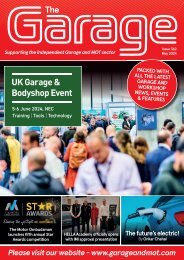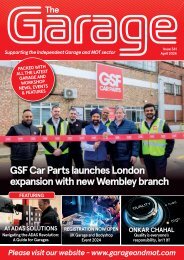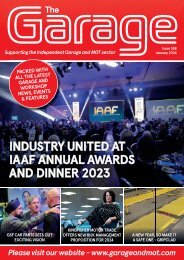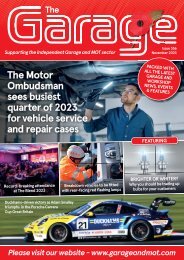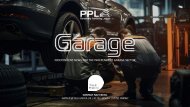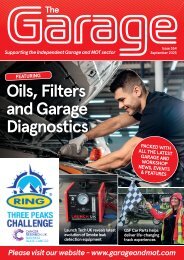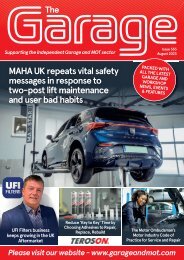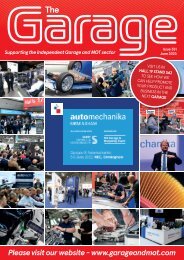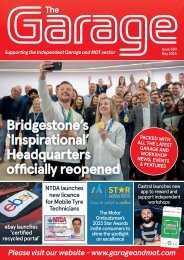Professional Recovery 354
You also want an ePaper? Increase the reach of your titles
YUMPU automatically turns print PDFs into web optimized ePapers that Google loves.
RECOVERYINSIDER<br />
by Derek Firminger<br />
The recovery industry<br />
have made significant<br />
improvements within its<br />
working environment<br />
where smart motorways are<br />
concerned<br />
SMART<br />
MOTORWAY<br />
IMPROVEMEN<br />
It’s not very often I comment on Fred Henderson the Breakdown Doctor’s comments, even when he tries to entice<br />
me into commenting on his lack of support for increased industry safety and compliance and his negative views on the<br />
industry implementing and adopting its own official voluntary recovery licence.<br />
Let’s break that mould and<br />
go to his edit from the last<br />
magazine 353, ‘Make Smart<br />
Motorways Safe – Just do it!’<br />
Says Fred, well his timing couldn’t<br />
have been better, I have a strong<br />
feeling he has been reading<br />
the Transport Committee oral<br />
evidence sessions on the roll-out<br />
of smart motorways last year,<br />
especially the session from<br />
May 19 where Edmund King AA<br />
President, and Nick Lyes Head<br />
of Roads Policy RAC, both gave<br />
evidence.<br />
I do find that strange, the AA<br />
and RAC are the ones regularly<br />
called to give evidence, just because of<br />
their household names, as most breakdown<br />
incidents on any motorway, conventional,<br />
all-lanes running, dynamic, whatever are<br />
attended by the independent recovery<br />
network.<br />
All motorway breakdown incidents are<br />
managed by<br />
Government<br />
agency led<br />
contracts or local<br />
police forces or<br />
their managing<br />
agents, including<br />
the majority<br />
for breakdown<br />
provider work,<br />
including the<br />
RAC and AA.<br />
This work is then<br />
passed to the<br />
independent<br />
network and is<br />
rarely, if ever,<br />
dealt with by either the AA or the RAC.<br />
Surely, they both have a duty to explain<br />
to the Chair of the Transport Committee<br />
how little their involvement is, and the fact<br />
remains that the experience that should<br />
be relied upon, is that of the independent<br />
operator.<br />
Anyway, off my soapbox and back to<br />
Fred’s last edit, as only 10 days after his<br />
comments the Transport Committee<br />
produced their latest and third report –<br />
‘Rollout and Safety of Smart Motorways’,<br />
where Edmund King’s evidence is<br />
remarkably similar to Fred’s. He thinks the<br />
same, citing that most incidents on the M1<br />
have happened at night, Fred also suggests<br />
that a dynamic hard shoulder could be<br />
turned into an extra lane between 7am to<br />
7pm and then reverted to a conventional<br />
hard shoulder after 7pm.<br />
I know for sure this dynamic use of the<br />
hard shoulder during set day and night<br />
times has been discussed previously. It<br />
was discussed back in those early days of<br />
Highways England just after they dropped<br />
the name Highways Agency, I know firsthand<br />
as I was at a number of working group<br />
meetings when this was suggested. Fred<br />
your quite right, first off it does sound<br />
quite logical but when you compare it to<br />
other schemes that have day to night-time<br />
8 PROFESSIONAL RECOVERY MAGAZINE<br />
8, 9, 10, 11 DF.indd 1 18/01/2022 09:01





